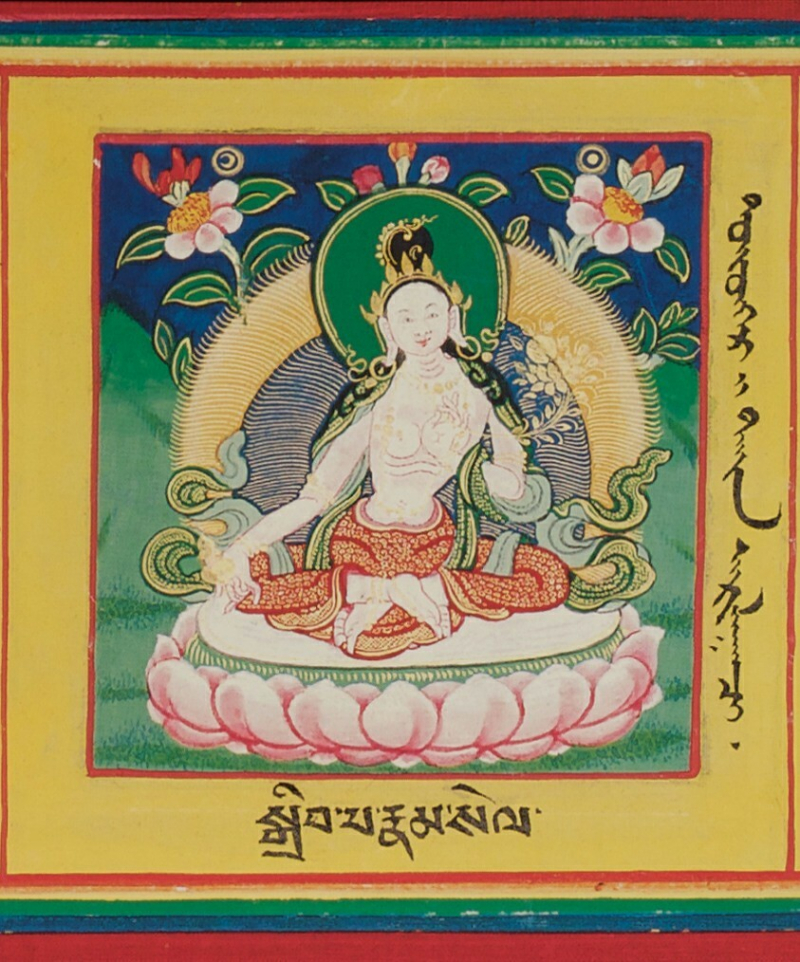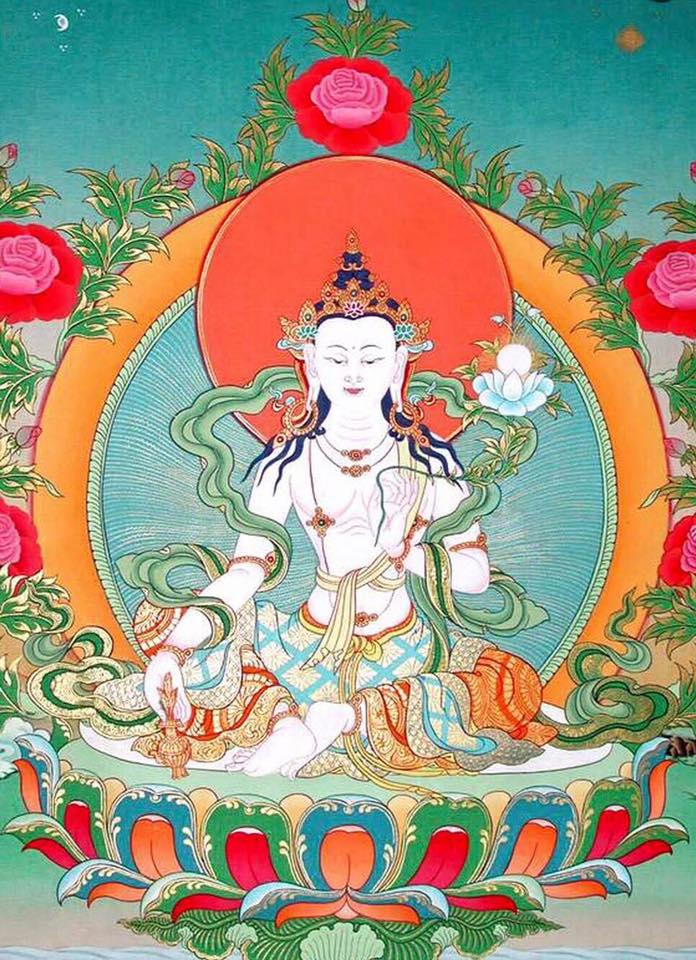Sarvanivāraṇaviṣkambhin
Sarvanivāraṇaviṣkambhin is The Cleansing and Empowering Bodhisattva. Sarvanivāraṇaviṣkambhin is a well-known Bodhisattva mentioned in the Guna Karandavyuha sutra, revered for his ability to cleanse followers of their sins. Sarvanivāraṇaviṣkambhin is a symbol of light, eliminate the afflictions, karma, birth and death of sentient beings. Knowing the obstacles of all, saving the sufferings of sentient beings, reaching the realm of liberation.
Sarvanivāraṇaviṣkambhin is depicted in blue or white attire and is associated with purifying actions. He performs the Bhumisparsa Mudra (left hand) and the Santikaran Mudra (right hand), forming a loop with the thumb and index finger. Sarvanivāraṇaviṣkambhin wields a sword in his right hand and carries a flag with a Visvavajra (double vajra) in his left.
In the Guna Karandavyuha sutra, it is mentioned that during Buddha Shakyamuni's discourse preparation, he entered an ecstatic Samadhi is known as Sarvasansodhana, purifying everything. Bodhisattva Sarvanivāraṇaviṣkambhin was present and questioned Buddha Shakyamuni about the golden rays of light illuminating the province. Buddha Shakyamuni explained that the rays were purifying sinners in Avichi Hell and taming the ignorant and evil-doers. Further discourses on Avalokiteshvara's grandeur and humanitarian deeds were given at the request of Bodhisattva Sarvanivāraṇaviṣkambhin.
In the Swayambhu tradition, the Great Odiayana Acharya of Kapilavastu engaged in meditation and performed a fire Puja (Yajna) with live fish as a sacrifice. Bodhisattva Sarvanivāraṇaviṣkambhin intervened, realizing that the act was non-virtuous due to ignorance, and granted Odiayana Acharya eight amazing powers. Following the instructions of Bodhisattva Sarvanivāraṇaviṣkambhin, Odiayana Acharya continued his spiritual practices and revered a precious boulder believed to be an emanation of Bodhisattva Sarvanivāraṇaviṣkambhin.
SarSarvanivāraṇaviṣkambhinn, the Cleansing and Empowering Bodhisattva, holds a significant place in Buddhist traditions. Revered for his ability to purify and empower practitioners, Sarvanivāraṇaviṣkambhin's depictions and narratives symbolize the transformative nature of Buddhist practice.










